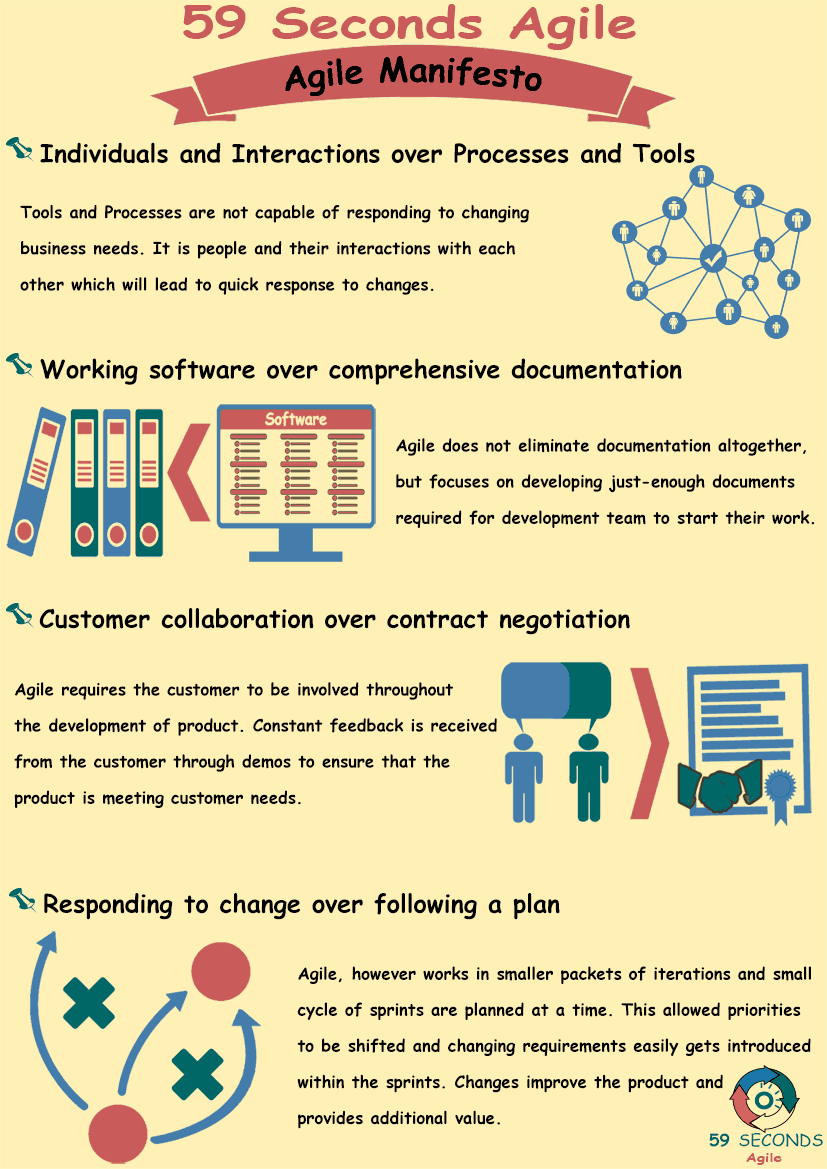Using the Agile Manifesto to Deliver Change
A 59 Seconds Agile Training Video
Continue to the Next Section Below
The Agile Manifesto
A 59 Seconds Agile Article
This article provides an ‘Introduction to the Agile Manifesto’ and looks to discuss what a values are stated within the Manifesto.
Agile Manifesto Conclusion
In summary, the four values of the Agile Manifesto improve the software development process. They encourage an adaptable environment that is healthy for all roles. In contrast to the traditional development model, Agile is modern and streamlined.
The Scrum framework provides eight steps that enable a scrum team by providing rapid visibility to business sponsors on the delivery of value to the business. Sponsors will be able to access the value expected based on the delivered result of each production release.
It is by using this framework and delivering measurable value sooner in a project, that allows stakeholders to assess whether additional features are needed to maximize business results and if not, re-purpose resources such as funding and people to other critical initiatives. The set of four values and twelve principles expressed in the manifesto are the drivers of all Agile practices.
Sometimes we forget this when we are in the middle of a difficult project, and sometimes we misinterpret or gloss over a principle. As part of the continuous improvement cycle, principle 12 should be invoked:
“At regular intervals, the team reflects on how to become more effective, then tunes and adjusts its behaviour accordingly”.
The ideal forum for this is a retrospective. In addition to the normal questions asked during the retrospective, it would be beneficial to revisit the Manifesto and discuss whether the project is aligned with its ideals, value by value and principle by principle.
Where there is a deviation, it is likely that there will be a weakness in the project. For instance, if “customer collaboration” was neglected, there could be a problem with user acceptance of a feature.
Continue Reading —> Next
The Agile Manifesto
A 59 Seconds Agile Video Animation
Continue Reading —> Next
User Stories Applied
A 59 Seconds Agile Book Review
User Stories Applied by Mike Cohn is one of our favourite books on Agile User Stories. The book starts with an overview into user stories, and details what a user story is and the different aspects of them. He then discusses how to go about writing a user story, and provides details of the INVEST criteria that can be used to determine if the story is meeting all of its objectives. Next Mike gives an in depth discussion of who user stories are written for and where to begin when gathering the details for them. The book then discusses acceptance testing user stories, including how to go about specifying these criteria and the responsibilities of the development team and customers during this process.
Continue Reading —> Next
The Agile Manifesto
A 59 Seconds Agile Infographic

Continue Reading —> Next
Agile Scrum Master Training Course
Our Favourite Agile Books
We found these books great for finding out more information on Agile Scrum:
Continue Reading —> Next


